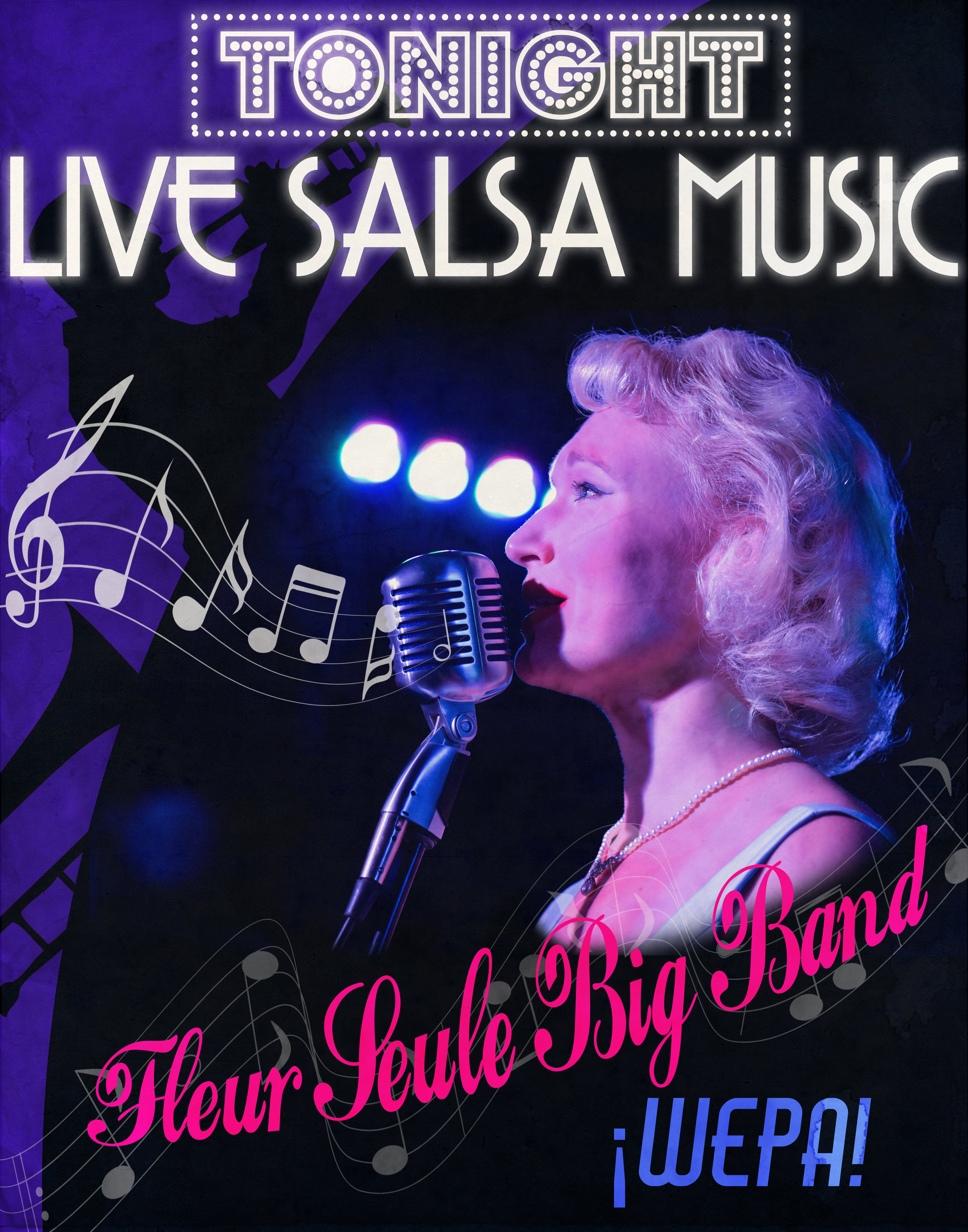Fleur Seule Latin Big Band
This 13 piece Latin Big Band plays classic salsa, mambo, cha cha, bachata, boogaloo, and more!
Fleur Seule is committed to classic music and our Latin Big Band brings out the hits made famous by Héctor Lavoe, Rubén Blades, Celia Cruz, Tito Puente, and more of the Fania Allstars. We perform in Manhattan for dancers who have been dancing salsa all their lives, or want to try for the very first time.
Héctor Lavoe is one of the biggest names in salsa music to this day, and I pay homage to him in my rendition of "El Cantante." Héctor Lavoe, Willie Colón, and what came to be known as the Fania Allstars are the Latin performing artists responsible for bringing salsa to the world. Up and coming Lavoe and Colón performed with their band in New York City in the 1970s and debuted a completely new sound. And it was a hit.
Celia Cruz is one of the few successful salseras, and I aspire to follow in her footsteps. Her infectious rhythms and ever-changing hairstyles thrilled audiences. She collaborated with such latin music greats as Tito Puente, Johnny Pacheco, Willie Colón, Pete Rodriguez, Ray Barretto, and many more, throughout her over 40 year singing career.
You cannot play classic Cuban Mambos without including some selections arranged by Xavier Cugat. The boisterous bandleader lead the Havana craze that made its way through Florida to New York City and invaded the night clubs beginning in the 1940s. The Copacabana opened in 1940 and went on to feature an unparalleled lineup of performers, from Sammy Davis, Jr. and Dean Martin, to Harry Belafonte, Tony Bennett, Billy Eckstine, and practically anyone who was anyone in show business. Cugat married the sensational Abbe Lane, whom the American media coined as "The swingingest sexpot in show business," with her sultry looks and moves, as she learned perfect Cuban Spanish from her husband that she performed in films and nightclubs. Not unlike my husband and I, my Spanish has improved significantly since we met. Somehow, his favorites tunes keep ending up in my sets! When I hear a mambo, I can't help but think of the Gym Scene in "West Side Story." That film was and still is the most important, beloved film of all time in the Puerto Rican community.
In the 1960s, American Singer, Eydie Gormé, and Mexican bolero stars, Trío de los Panchos, collaborated on what turned into an instant sensation; The album, "Eydie Gormé Canta en Español con el Trio Los Panchos." Every Boricua has heard this album and any time I sing "Piel Canela," or "Sabor a Mí," I can spot my fellow Puerto Ricans in the audience, singing along, remembering their families dancing to the record player in their living room. Gormé had been working at the U.N. as an interpreter, and due to her lingual abilities in Ladino and Spanish, she easily made the crossover album successful.
Nuyorican Tito Puente was the timbale king, and created energetic cha chas, rumbas (rhumbas), boleros, and mambos that created a frenzy in nightclubs in the 1940s, 1950s, and 1960s, from the Copacabana in Manhattan, to the Tropicana in Havana. After serving in the US Navy in WWII, the Juilliard educated conductor had one of his biggest hits with "Oye Como Va," that remains popular today. Our dancers hear that introduction and they know what song is coming!
Rubén Blades actually wrote and gifted the song, "El Cantante," to Héctor, which is depicted in the film of the same name. Marc Anthony played the salsero flawlessly. The vocal and physical resemblance is almost uncanny, and I think Marc did the role justice. We of course include some of his repertoire, ending our nights with the audience singing along to "Vivir Mi Vida" and getting in that last dance to carry them into their work week.
Join us for our next night of latin music! VISIT CALENDAR




